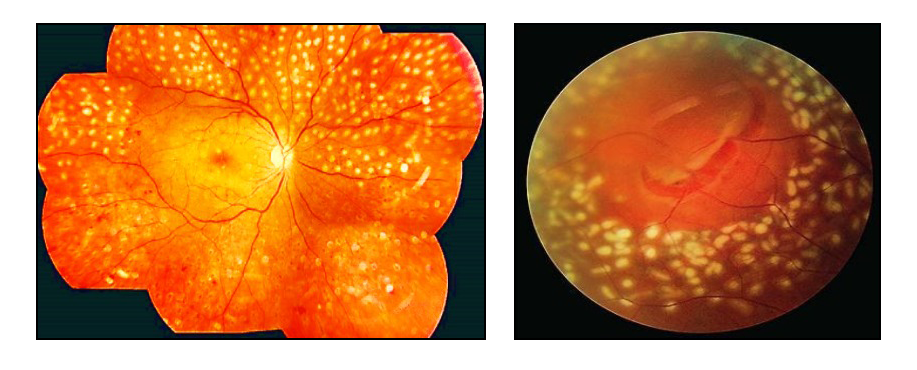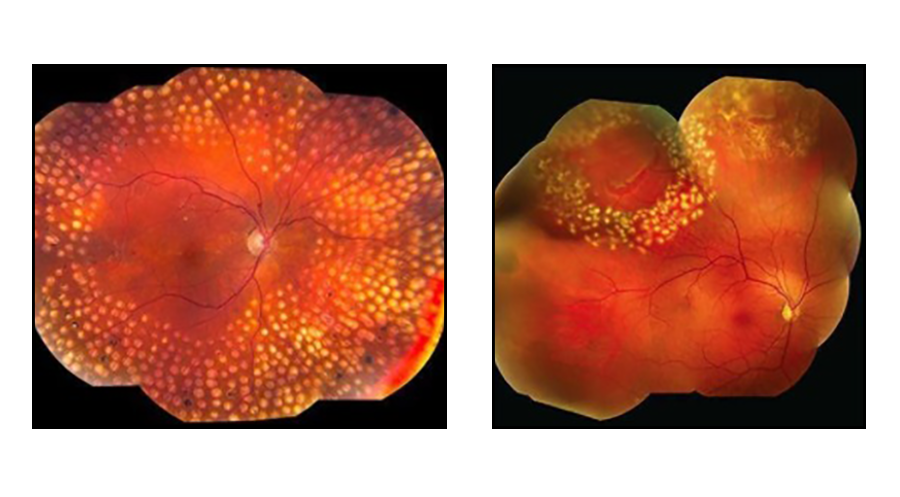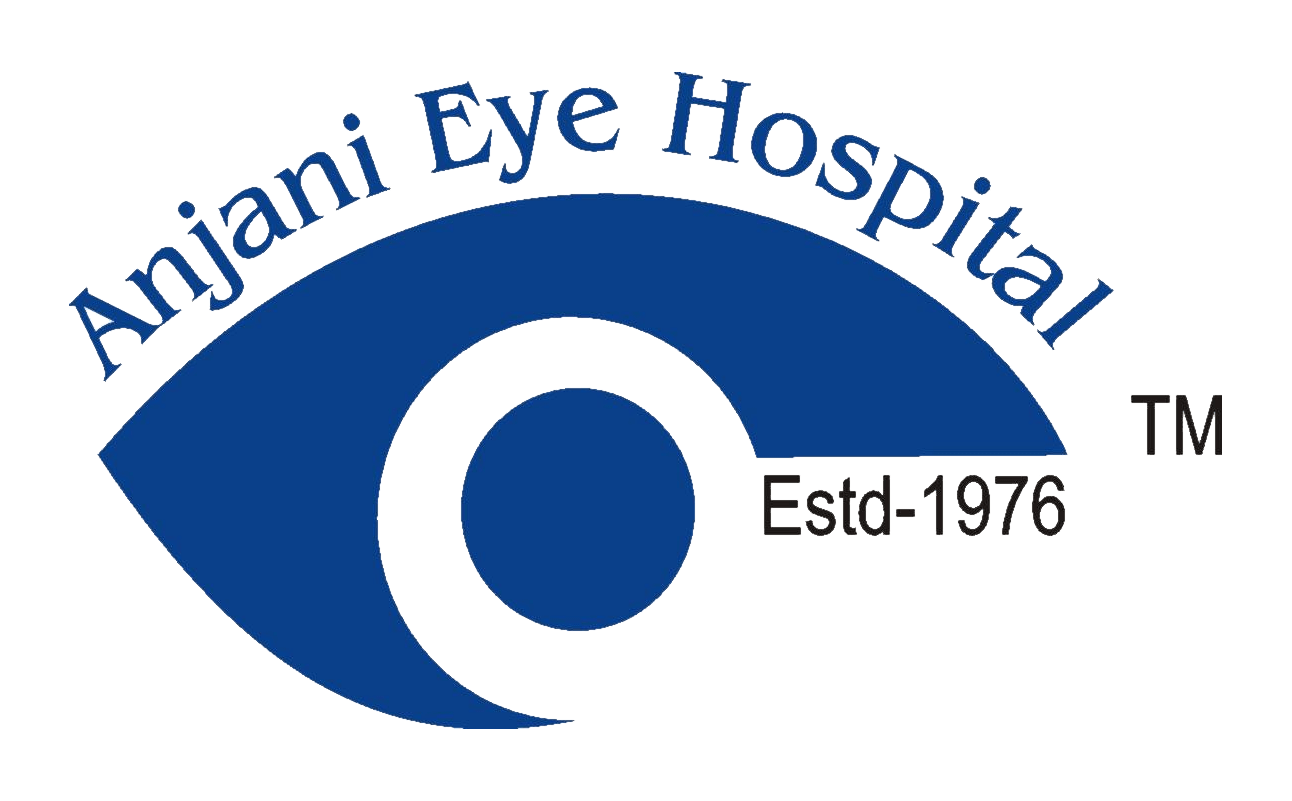What is Laser Treatment of the Retina
Many retinal disorders involve abnormal or damaged blood vessels. These vessels may leak blood into the surrounding area, resulting in gradual vision loss. A laser is a pure, high-intensity beam of light energy. The laser light can be precisely focused onto the retina, selectively treating the desired area while leaving the surrounding tissues untouched. The absorbed energy creates a microscopic spot to destroy lesions or weld tissues together. During laser treatment, a laser is used to close leaky blood vessels in the eye or to treat retinal breaks (tears / holes).
Laser surgery is usually painless; at the most it may cause temporary discomfort. It is usually performed in the operating room while the patient is awake and comfortable. In rare cases, anesthesia is given those patients who cannot tolerate the discomfort or to children to keep them still during treatment. The entire procedure lasts 10 to 30 minutes.

Who requires Laser Treatment?
Lasers are commonly used to treat the following eye conditions:
- Diabetic Retinopathy
- Retinal Vein Occlusions
- Retinopathy of Prematurity
- Retinal Breaks
- Retinal Detachment
- Central Serous Chorio-Retinopathy (CSCR)
- In other rare conditions like Ocular Tumors

How do I know that I require Laser Treatment?
With retinal diseases your eye will almost always look and feel normal, even when there is bleeding and leakage in the back of the eye. Your vision may also be normal for a while despite the presence of potentially blinding eye problems.
The only way to find out whether you need laser surgery is to have careful, dilated retinal examinations at regular intervals, often followed by a special test (called fluorescein angiography if advised by the retinal specialist), to evaluate the eye’s circulation.
During Treatment
Before the start of treatment, Eye drops are used to dilate your pupils. Your eyes will be temporarily numbed with local anesthetic eye drops. A contact lens is usually used to hold your eyelids open and to focus the laser beam on your retina.
The entire procedure normally takes 10 – 30 minutes, so you should not have to stay in the hospital overnight. You may need to come back for another round of laser treatment. Because of the anesthetic, the treatment should not be painful.
After Laser Treatment
There are virtually no restrictions following retinal Laser Treatment, but you would need to relax on the day of the treatment. Some patients experience side effects after Laser Treatment. These typically last no more than a few hours. Blurry vision may be a side effect, but it could also be a natural result of the eye drops given before the laser procedure. For this reason, patients will not be able to drive home or ride the bus alone. Wearing sunglasses can help if your eyes are more sensitive to light. Some patients may complain of temporary blurring for several weeks or even months. In addition, depending on the condition being treated, some patients may notice a permanent blind spot or decrease in peripheral and night vision.
Most patients find they can go back to their routine a day later. Invariably the doctor will advise you not to lift heavy weights for a few weeks. In some cases the doctor may advise patients to stay at home for several days. You will be required to come again for a follow-up examination in a couple of weeks up to a couple of months.
Is one session of Laser Treatment enough?
The number of sessions required by a patient depends on the disease for which the laser treatment is done. It takes usually several weeks to months for surgeons to decide whether the treatment has been successful. Many patients require more than one session of treatment to control their problem and prevent further loss of vision.
Risks and Complications
Although the chances of complications occurring due to the procedure are very less but following complications may occur:
- Decrease in visual acuity and/or visual field
- Night vision difficulty
- Difficulty in seeing near objects or reading small letters
- Difficulty in appreciating colors and contrast of objects
- Vitreous hemorrhage
- Breaks in the retina and retinal detachment
- Inflammation and elevated intraocular pressure
- Macular edema
- Pain during the treatment and shortly after the procedure
- Corneal epithelial defects and recurrent erosions
- Accidental laser burn of the fovea
- Progressive tractional retinal detachment.
Frequently Asked Questions (FAQ)
Laser Treatment will prevent the progression of the disease. In some cases, vision may also improve slightly. Typically, vision that is lost cannot be restored. So, the longer the treatment is delayed, the higher the chance of permanently losing vision.
This depends on your eye’s response to the first laser treatment. Your doctor will decide if it is needed. If the retina problem comes back, then another round of laser treatment may be required.
Laser Treatment is a very safe procedure. Both the side effects and the possible complications are extremely rare.
Yes, you can perform all your daily activities as you normally do.
No. During Laser Treatment, your eye will be numbed so you don’t feel any pain. A few patients may experience mild pain, but this only lasts for 3-4 hours. These patients may use eye drops to reduce the pain.
Yes. Laser Treatment can close the hole. This prevents retinal detachment.
Yes. You should have a regular check-up with the vitreo-retinal surgeon at least once a year. This will allow doctors to see how well you are responding to the treatment. It can also help them see if any new retinal damage has occurred.

